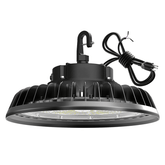What is the difference between the color temperature and color rendering index of LED lighting, and are they important?
What is the difference between the color temperature and color rendering index of LED lighting and why are they important?
Correlation color temperature (CCT) and color rendering index (CRI) are two key factors to consider when choosing LED lighting. These two aspects play an important role in creating the desired atmosphere and ensuring accurate color representation. This article will explain the difference between color and CRI and how to choose the best combination for your application.
Correlation color temperature: Defines the hue of light
Color temperature, measured in Kelvin (K), refers to the appearance of the light emitted by a light source. It indicates whether the light is warm (pale yellow), neutral, or cool (pale blue) in tone. The color temperature affects the overall atmosphere and mood of the space. It can also affect visual comfort, task performance, and circadian rhythms. When choosing the right lighting for your space, it is helpful to know the color temperature.
Here is a general guide to the color temperature range:
-
Warm white (2,700-3,000 K) : Creates a comfortable and intimate atmosphere, ideal for residential Spaces, restaurants and hotel lobbies. This warm range of light can reduce stress and promote relaxation.
-
Neutral white (3500 k - 4500 k) : provides a balanced and neutral tone, suitable for offices, retail stores and showrooms. Its neutral quality renders colors more accurately by avoiding warm or cool colors. It is also suitable for healthcare and educational facilities to provide adequate lighting for tasks and to focus attention without over-stimulation.
- Cold white (5,000-6,500 K) : produces clear and uplifting light, ideal for mission-oriented Spaces, workshops or sports facilities. These cooler color temperatures can improve alertness and cognitive function. However, light in this range also suppresses melatonin production. Melatonin promotes relaxation and sleep, so this bluer end is not suitable for evening or nighttime lighting, including street lighting. For these, you'll want to stick with the neutral and warm CCT range.
Color rendering index: evaluates color accuracy
The Color Rendering index (CRI) is a numerical scale (0 to 100) that represents the ability of a light source to accurately reproduce color compared to natural sunlight. Higher CRI values indicate better color rendering, ensuring that colors look realistic under light sources. This is especially important in applications where color accuracy is critical, such as art galleries, retail displays, and photography studios.
CRI and interior lighting
For most general indoor applications, a CRI of 80 or higher is considered appropriate. However, for more color-demanding tasks, it is recommended to set the CRI to 90 or higher to ensure the most accurate color performance.
CRI and outdoor lighting
While a color rendering index of 70 is generally sufficient for most outdoor lighting applications, a color rendering index value higher than 80 or 90 May be beneficial in some cases, such as:
- Sports facilities with higher CRI can improve visibility
- Outdoor activity space and outdoor dining area, high resolution can improve the visual experience
- Corporate locations that rely on visual appeal to attract customers, including restaurants, hotels and upscale car dealerships.
Additional caveats
When comparing the color rendering index of different lighting options, keep in mind that the color rendering index and efficiency are interrelated: the higher the color rendering index, the less efficient the light.
That's because a high color rendering index requires a wider, fuller spectrum to achieve something close to natural daylight, and high light efficiency, or what you might think of as 'perceived brightness,' is best achieved in a narrower spectrum, in the 545-555nm wavelength range. Outside of this narrow range, it requires more power to reach a given level of brightness. As a result, wider, more comprehensive chromatography requires more power and is less efficient to operate.
You need to decide on the best balance between color accuracy and energy bill reduction for your application.
The more should know
The color temperature and color rendering index play a crucial role in determining the quality and effect of LED lighting. Understanding the differences between them helps you choose the right lighting solution for each space. However, it never hurts to ask for help. Whether you're still not sure what color temperature or CRI you should aim for, or you'd rather save yourself the time and trouble of perusing the lighting catalog, our lighting professionals are here to help you. Call, text or email us, or submit a request for free lighting services (be sure to check the 'Product Recommendations' and tell us the space you need to light). Our team can save you a lot of legwork at no extra cost. Are you ready to get started? Contact today:








